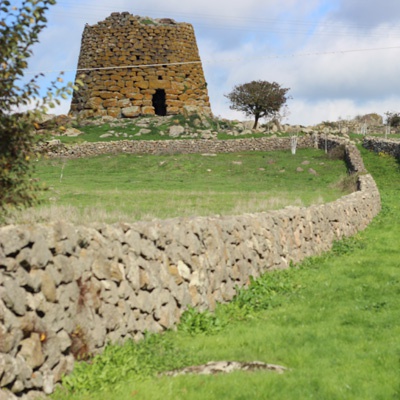
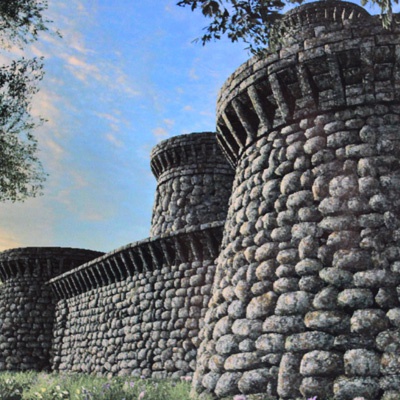
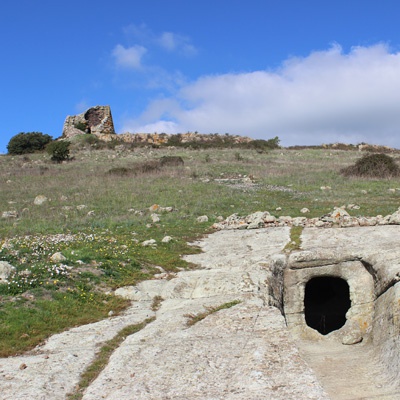
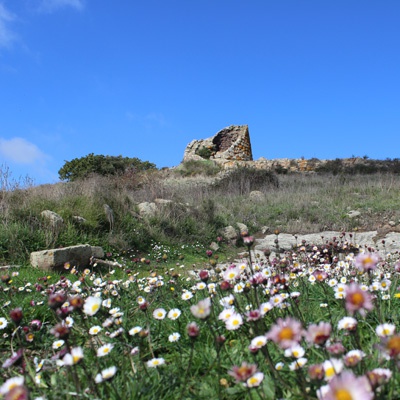
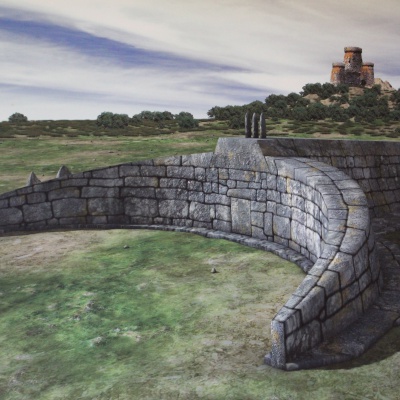
Sardinia retains very special traces of one of the most significant events of the Mediterranean prehistory: the Nuragic civilization, that developed in the island during the Iron Age between 1800 and 300 B.C., and testified by the numerous and typical buildings scattered all over Sardinia: the Nuraghe.
About seven thousand nuraghi are known in Sardinia, most of whom have not yet been excavated. Because monks that first arrived in the Island to Evangelize the Sards built their first churches using the remais of nuraghi and other symbols of Sardinian cult, many believed that the nuraghi originally were places of worship.
One still does not know the exact ancestal functions of Nuraghi: maybe they where lookout towers, maybe part of a large fortified system, or just an isolated strongholds that controlled a limited area or property of a single family. They could also hve served as a temple. But, according to the most, their purpose, however, was primarily military and strategic.
Legend has it that the first Nuraghe was a gift given the Sardinians by Daedalus. To escape the wrath of Minos, Daedalus, with his wax wings, escaped from Crete with his son Icarus, who died for having flown to near the sun. He flew over the Mediterranean and arrived in Sardinia, where hospitable shepherds welcomed and honored him. Before departing from the Island Daedalus, in gratitude, wanted to leave them a gift and, by superimposing one stone upon another, he began to tie the stones firmly, but without using any lime, forming a building never seen until that day , the Nuraghe.
Other legends want the Nuraghi to be the gates of hell and dwellings of devils, dens of ogres, or homes of the giants, who, after death, where buried not far from them (tombs of the giants).
However, it is noteworthy that the belief abouth Giants inhabiting the ancient megalithic constructions, the menhirs and dolmens, is not only Sardinian, but present in many European traditions, the same way of superstitions referring to the existence of dwarfs, such as those that inhabited the caves of Bretagne.
In Sardinia there are 7000 known nuraghi. Next to them on counts in a great number of Domus de Janas (homes of the fairies). But domus de Janas are not only the home of fairies, but important prehistoric monuments, dating back more than 5000 years ago. These niches dug into the rock, were utiizzate in ancient civilizations as burrial places and houses for the dead to spend their afterlife. Here and there reflect in Sardinia legends around those prehistoric tombs, which, it was believed, were inhabited by dwarfs.These dwarves take in Sardinia various names: a few miles from Monteleone Rocca Doria, they are called simply "nanos" (the Sardinian name for dwarf), although the most common name is "Janas" or "gianneddas", or "mergianas", or "argianas". Or "b?rghines" in Barbagia or "Faddi" in Sassari. And truly the gianas, in the imagination of the Sardinians, are precisely fairies of tiny stature, sorceresses, with a delicious and beautiful voice. They are female and even male, but one could not tell one from the other. Sometimes they had long breasts that they threw over the shoulders. And they were fitted with long steel nails, with which they dug their dwellings into the rock. To men they were nor beneficial nor evil, indeed they escaped any contact with other beings of the earth.
The Janas had the gift of prophecy, and determined the destiny of men. The concept that represents gianas as beings indifferent or benefits for human life, is opposed to the one that represented them as harmful witches or sorceresses capable of every evil spell. Therefore it was considered very dangerous to enter in Domos de janas, in which where hidden terrible monsters. In some areas, Janas are represented as very rich and very beautiful women, occupied in precious brocade weaving on golden frames, but ready to offense and terrible against those who dared to molest or just look at them.
Sometimes, they enchanted travelers, who were captured by cruel dwarfs, and placed in a hole with other victims. From these the "giana ma?sta" sucked the blood out, and then shut herself up in a cave for three days, to give birth to small gianas. In Laconi, it is said that is Gianas are the souls of the women died in childbirth, which gather on the banks of the rivers, and wash clothes for their baby. In Sardinian imagination, the fabulous beings that have greater relevance to the gianas are the giants, and that is because of the proximity that the Domus de gianas have with nuraghi and tombs of giants. Rises so naturally, in popular belief, the conception of the struggle between the dwarfs against the giants inhabitants of the nuraghi. Struggle that sometimes results in favor of the former, because even if they are physically weaker than their huge competitors, sometimes manage to overcome them with their ingenious cunning, since the dwarves, in Sardinia as well as in other regions, are thought to be provided with subtle intelligence. The fundamental peculiarity of Janas, that is, their smallness, dates back to remote times, perhaps pre-Romanity, and is confirmed even in dwarf legends which run on the mouth of the people in Bretagne and other countries.
The duration of the excursion is half day (up to 4 hours) walking tour + transfer